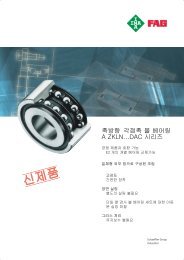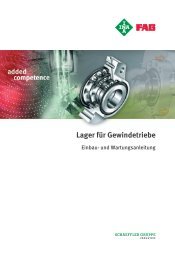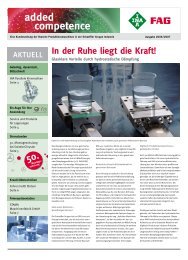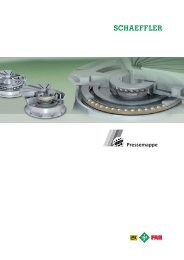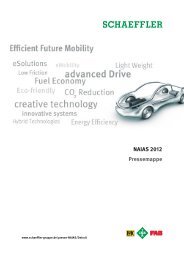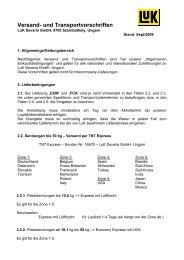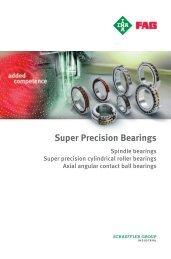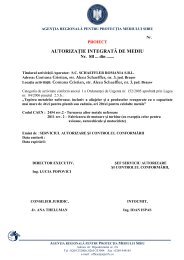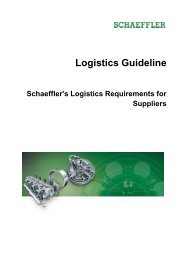You also want an ePaper? Increase the reach of your titles
YUMPU automatically turns print PDFs into web optimized ePapers that Google loves.
A rational alternative to the CSA would be, for<br />
example, a pump driven directly via the accessories.<br />
The benefit of this would be the elimination<br />
of the electric motor <strong>and</strong> electronics, making<br />
it possible to, amongst other things,<br />
significantly lower the <strong>system</strong> costs. The disadvantages<br />
include higher interface dem<strong>and</strong>s on<br />
other <strong>system</strong>s <strong>and</strong> the lack of functionality when<br />
the engine is not running.<br />
<strong>Clutch</strong>-by-wire<br />
In modern engines, the gas pedal is no longer<br />
mechanically linked to the throttle valve or the<br />
injection <strong>system</strong>. Instead there is just a sensor<br />
on the gas pedal that forwards the driver's comm<strong>and</strong>s<br />
to an actuator via a control device (electric<br />
gas pedal). This creates the possibility to<br />
adapt the engine characteristic as required to<br />
the driving situation. This is now a basic prerequisite<br />
for making optimal use of the potential of<br />
today's engines <strong>and</strong> ensuring a comfortable<br />
drive.<br />
A clutch-by-wire <strong>system</strong> promises comparable<br />
potential for the clutch (CBW, Figure 30). This<br />
is the entry-level version of the family of<br />
automated shift transmissions <strong>and</strong> represents<br />
the most complex version for clutch<br />
operation for the manual shift transmission.<br />
The CBW <strong>system</strong> eliminates the <strong>release</strong> <strong>system</strong><br />
as a fixed connection between the clutch<br />
<strong>and</strong> clutch pedal <strong>and</strong> uses a pedal travel sensor,<br />
a controller <strong>and</strong> an actuator to operate the<br />
clutch (Figure 30). The pedal operating load<br />
Figure 30 <strong>Clutch</strong>-by-wire (CBW)<br />
LuK SYMPOSIUM 2006<br />
<strong>Clutch</strong> <strong>and</strong> <strong>release</strong> <strong>system</strong> 2<br />
Figure 31 Development of the full load characteristic of a<br />
2.0 liter diesel engine<br />
can be chosen freely using a pedal spring or<br />
comparable mechanism. This makes an optimal<br />
layout possible regardless of the engine<br />
torque.<br />
In order to justify the high expenditure on<br />
hardware <strong>and</strong> software, a CBW <strong>system</strong> offers<br />
numerous possibilities for improving driving<br />
comfort. These include, in particular, slip control<br />
for vibration isolation between the engine<br />
<strong>and</strong> transmission, which is dealt with in the<br />
article “Software for Automated Transmissions”<br />
[1].<br />
In a similar manor to how the electric gas pedal<br />
adapts the engine characteristics, CBW can be<br />
used to adapt the torque characteristic of the<br />
clutch to the specific driving situation. An<br />
important example in this context is a launch<br />
process, which is influenced by the combination<br />
of engine torque <strong>and</strong> clutch torque. Figure<br />
31 shows how the full-load curve of a 2.0 liter<br />
diesel engine has changed over the years. In<br />
the idle speed range, the engines operate both<br />
then <strong>and</strong> now in induction mode, with the maximum<br />
engine torque practically unchanged at<br />
low speeds. By contrast, the maximum engine<br />
torques, <strong>and</strong> therefore also the clutch torques,<br />
have tripled over the years (see also Figure 1).<br />
As a result, a weak engine is combined with a<br />
strong clutch at low engine speeds (red area in<br />
Figure 31).<br />
This circumstance can be rectified with a CBW.<br />
Using information such as the engine <strong>and</strong><br />
43



